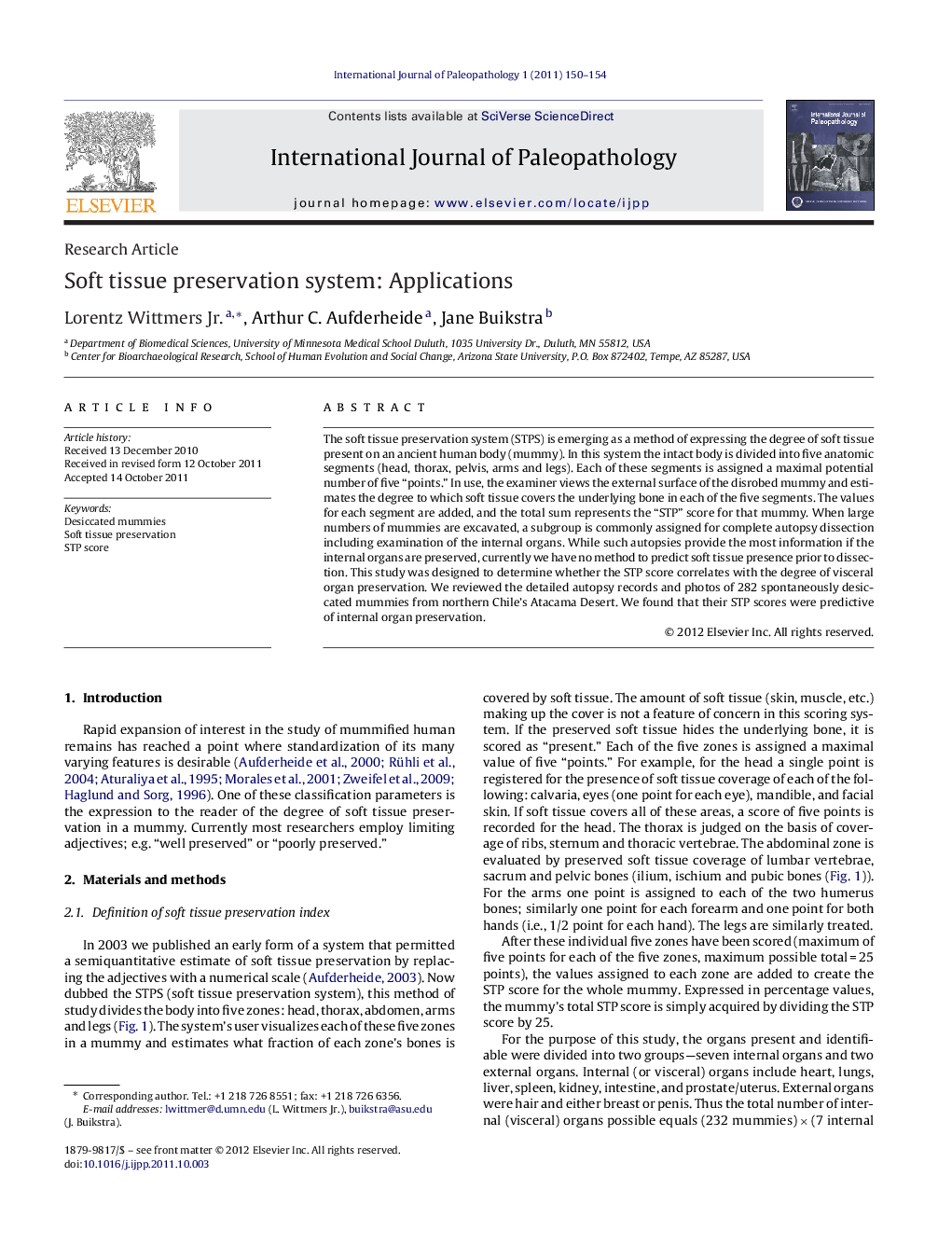| Article ID | Journal | Published Year | Pages | File Type |
|---|---|---|---|---|
| 101354 | International Journal of Paleopathology | 2011 | 5 Pages |
The soft tissue preservation system (STPS) is emerging as a method of expressing the degree of soft tissue present on an ancient human body (mummy). In this system the intact body is divided into five anatomic segments (head, thorax, pelvis, arms and legs). Each of these segments is assigned a maximal potential number of five “points.” In use, the examiner views the external surface of the disrobed mummy and estimates the degree to which soft tissue covers the underlying bone in each of the five segments. The values for each segment are added, and the total sum represents the “STP” score for that mummy. When large numbers of mummies are excavated, a subgroup is commonly assigned for complete autopsy dissection including examination of the internal organs. While such autopsies provide the most information if the internal organs are preserved, currently we have no method to predict soft tissue presence prior to dissection. This study was designed to determine whether the STP score correlates with the degree of visceral organ preservation. We reviewed the detailed autopsy records and photos of 282 spontaneously desiccated mummies from northern Chile's Atacama Desert. We found that their STP scores were predictive of internal organ preservation.
► Desiccated mummies and their soft tissue analysis. ► Organ specific soft tissue preservation. ► Sex and age relationship to organ preservation. ► Increasing the efficiency of mummy dissection. ► Predicting organ preservation from soft tissue classification.
